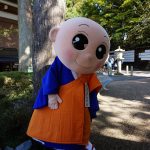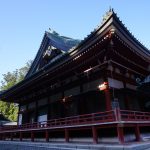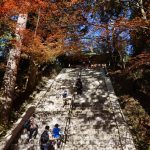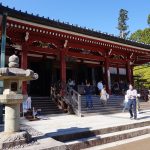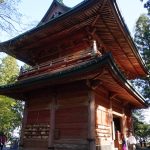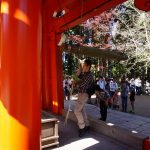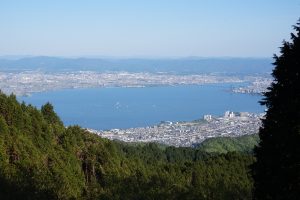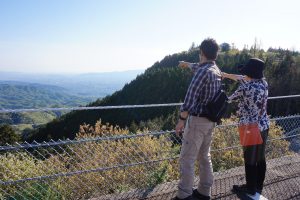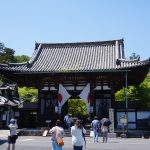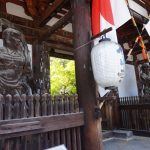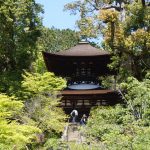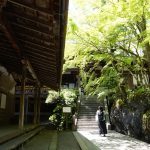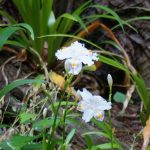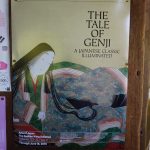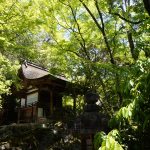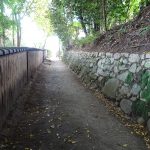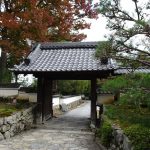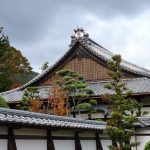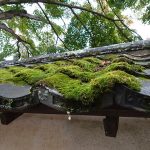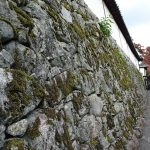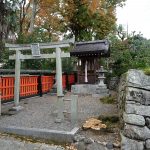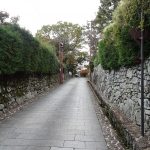S-43 Hieizan & Ishiyamadera temple
historical walking in Shiga, Lake Biwa
(March – December)
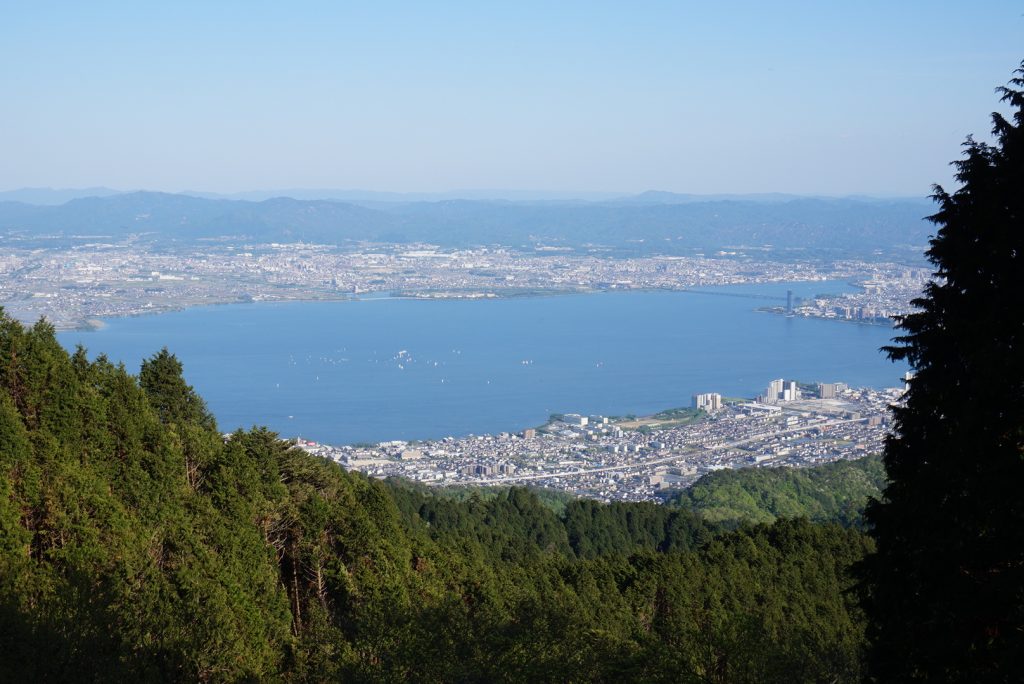
Hieizan (Mt. Hiei) UNESCO World Cultural Heritage
Mt. Hiei stands on the border between Shiga and Kyoto prefectures. The magnificent Mt. Hiei, standing 848 meters tall and with five distinct peaks, has been worshipped as a spiritual mountain since ancient times. When Saicho, the founder of the Tendai sect of Buddhism, opened Enryakuji Temple in the eighth century, the entire mountain became one large training site for the spiritual protection of the nation. Many of the monks responsible for the varied sects of Japanese Buddhism started out from here, including Shinran, Dogen, and Nichiren. This has led to Mt. Hiei being called the “the roots of Japanese Buddhism.” Many of the temple’s buildings are reconstructions from the 16th century or later, but the ten national treasures and more than fifty important cultural assets housed within speak to the rich history and culture of the temple. The view of Lake Biwa from Mt. Hiei is also absolutely spectacular, and has been compared to the pureland where Yakushi, the principle object of worship at Enryakuji Temple, is said to dwell.
Since the founding of Enryakuji Temple 1200 years ago, Mt. Hiei has been isolated from the outside world as a place of spiritual training. This has also served to preserve pure and beautiful nature on the mountainside. Each of the seasons provide dynamic scenery to be enjoyed, from the dazzling fresh green of early summer, to the yellow and crimson leaves that cover the slopes in fall, and the pure veil of silent snow that falls in winter. As this is a place where hunting has been long forbidden, the deep forests are also home to a rich ecosystem, teeming with life. The mountain is especially famous as a breeding ground for birds, and has been stipulated a national natural monument. Meanwhile, Lake Biwa is a world-famous ancient lake, boasting a history of more than four million years. The lake offers a rich ecosystem, with many species endemic to its environs. It is also known as a precious destination for migratory water birds, and is a registered marsh under the Ramsar Convention.
Ishiyamadera ( the temple of Sacred Stone)
Ishiyamadera is the thirteenth temple of the Kannon Pilgrimage Site in Saigoku, and is an ancient temple in the lake country that is widely known as the place where Murasaki Shikibu (female writer of the Heian period) devised the concept of “The Tale of Genji”.
In the precincts, there is a natural monument “Wollastonite”, which is the origin of Ishiyama. Limestone comes into contact with granite protruding from the ground and is altered by its thermal action, and such a magnificent “wollastonite” is extremely rare and valuable.
Above the wollastonite is Japan’s oldest “Tahoto”(multi-treasure pagoda) donated by Minamoto no Yoritomo (Shogun = the General of Kamakura period). It is a National Important Cultural Property and a National Treasure, and its graceful appearance has been used in the design of 4-yen stamps in the past.
The main hall is the oldest wooden building in Shiga prefecture. The inner camp was built in the middle of the Heian period, and the outer camp was expanded in 1602 by the donation of Yodo princess. Enshrined in the main hall is the Honzon Nyoirin Kanzeon Bosatsu, who gathers faith as a Kannon of safe delivery, good fortune, and marriage.
This temple is also called a “flower temple”, and plums, cherry blossoms, azaleas, irises, and autumn leaves bloom every season to entertain visitors.
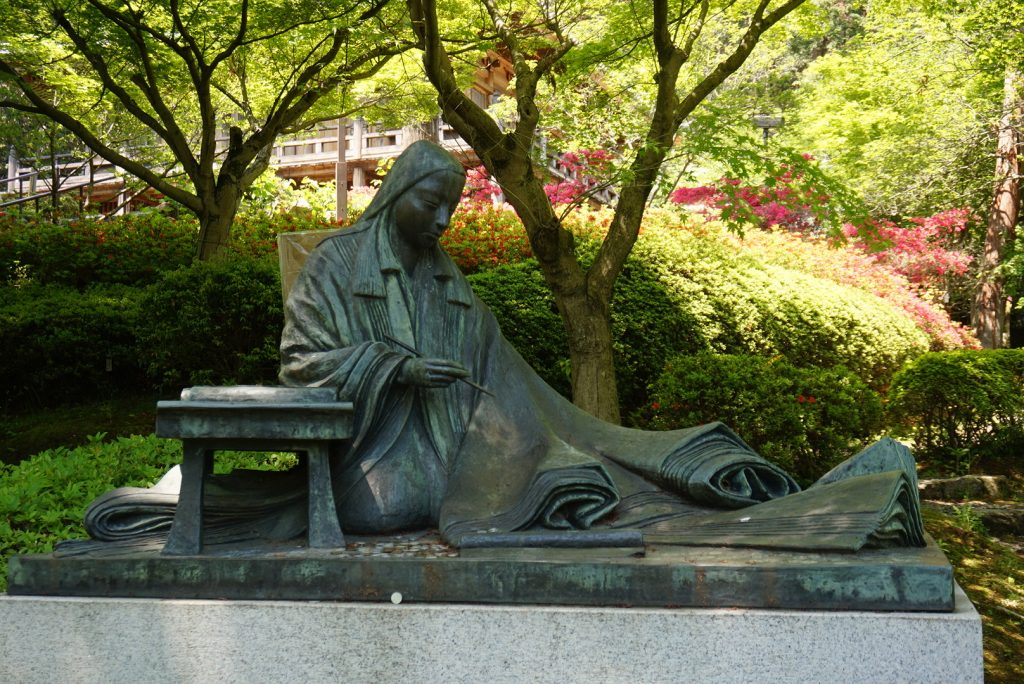
Anou-shu’s Stone Walls
Ishigaki (= stone wall) is one of the characteristics of Japanese castles.
In Sakamoto, the gate town of Enryakuji, there was a group of engineers called Anou-shu, who mainly constructed stone walls for temples and castles. The stone wall by Anou-shu is made by a special technique called “Anou stacking”, which skillfully combines unprocessed natural stones, as symbolized by the oral story telling “listening to the voice of stones”.
During the Sengoku (Samurai) period, when Nobunaga Oda burned down Mt. Hiei Enkeiji Temple, he was surprised at the robustness of the stone wall, and built Azuchi Castle by gathering the masons (craftsmen) who lived around Sakamoto, Anou, and Shigasato.
Since then, the craftsmen have been called “Anō-shu” and have become known nationwide by working on the construction of castles such as Osaka Castle and Edo Castle.
Currently, it is said that more than 80% of the stone walls of castles nationwide are the hands of Anou-shu.
In these area, the stone walls still create a beautiful landscape.

/// FIT package
We can arrange this tour for individual, family, or the small group, following to your designated date, from late March to early December.
/// Itinerary
8:00 Meet at JR Kyoto station, then guide takes you by local train to Ishiyamadera temple.
Look around Ishiyamadera temple.(2H)
View Points:
●East Main Gate, ●Main Hall, ●Tahoto (multi-treasure pagoda), ●Hojo-den (Murasaki Shikibu exhibition), and the other spots on the temple premises
10:30 Move to Hieizan area, by local train and cable car(12:00), until the way to cable car station, guide you some Ishigaki (stone walls) spots related to the Sengoku (Samurai) era history.
View Points:
●Shigain-monzeki 滋賀院門跡, ●Jigen-do 慈眼堂,
●Hiyoshi-Toushougu 日吉東照宮
12:15 Look around Hieizan area, by walk and bus.(3.5H)
You can take lunch at the local diner restaurant around this area.
View Points:
●East area (To-do), ●West area (Sai-to), ●Yokawa area
●Mountaintop Viewing Platform
16:05 At the viewing platform, take the bus to Kyoto
17:20 Arrive at JR Kyoto station, then finish the tour.
/// Price
| Number of Guests |
1 | 2 | 3 | 4-5 | 6 or more (Max 10) |
| Price / person (Yen) |
97,000 | 54,000 | 40,000 | 32,000 | 39,000 |
Price Include:
- Transportation (local train, bus, cable car) for guests and guide
- English (or other languages) speaking guide
(English, Chinese, French, German, Italian, Spanish, Portuguese, Dutch, Russian, Thai) - Entrance fees described in the itinerary for guests and guide
- Commission for arrangements
- Commission for settlements by credit card
- Consumption tax
Price Exclude:
- Transportation costs to the meeting place / ending place
- Accommodation costs
- Food and beverage fee for customers and guide
- Souvenir fee / personal expenses
- Expenses for services not described in the itinerary
Regarding these standard courses, we can arrange the plan upon your request by adding / deleting destinations, and combining other courses before and after, making reservations of accommodation, transportation, restaurants, or event tickets, etc. Please contact us by all means.
Please see here for the arrangement fee.
ex.1 Arrangement for accommodation
Room charge 10,000yen(1night 1person) + Commission 1,650yen(incl. c-tax)=Total 11,650yen
ex.2 Arrangement for additional transportation
Super express train 20,000yen(1person) + Commission 3,300yen(incl. c-tax)=Total 23,300yen
/// Cancellation Policy
Cancellation Policy for this course;
| Days to Departure | Cancellation Charge |
| More than 31 days | 10,000JPY |
| 30-15 days | 50% of trip price, Min 10,000JPY |
| 14-8 days | 70% of trip price, Min 10,000JPY |
| 7 days or Less, No Show | 100% of trip price |
Please refer to “Price, Terms and Conditions” for other detailed regulations.
/// Application Form
Please select the course and fill in the below box;
/// Payment
Payment can be settled by credit card (Paypal or Stripe).
After your booking, we will send you an invoice, then after your payment by credit card, the booking would be completed.
/// Contact
If you have any questions or offer to book, please send an email. We welcome even little questions! Don’t hesitate, and see you in Japan!!
Contact us: info@i-travel-square.tokyo


